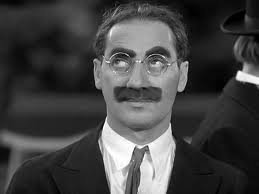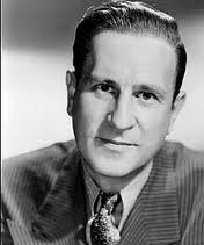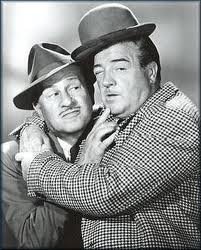
A zoo (short for zoological garden; also called an animal park or menagerie) is a facility in which animals are kept within enclosures for public exhibition and often bred for conservation purposes.
The term zoological garden refers to zoology, the study of animals. The term is derived from the Greek ζώον, zoon, 'animal', and the suffix -λογία, -logia, 'study of'. The abbreviation zoo was first used of the London Zoological Gardens, which was opened for scientific study in 1828 and to the public in 1847. In the United States alone, zoos are visited by over 181 million people annually.
Etymology
The London Zoo, which was opened in 1828, was initially known as the "Gardens and Menagerie of the Zoological Society of London", and it described itself as a menagerie or "zoological forest". The abbreviation "zoo" first appeared in print in the United Kingdom around 1847, when it was used for the Clifton Zoo, but it was not until some 20 years later that the shortened form became popular in the rhyming song "Walking in the Zoo" by music-hall artist Alfred Vance.[4] The term "zoological park" was used for more expansive facilities in Halifax, Nova Scotia, Washington, D.C., and the Bronx in New York, which opened in 1847, 1891 and 1899 respectively.
Relatively new terms for zoos in the late 20th century are "conservation park" or "bio park". Adopting a new name is a strategy used by some zoo professionals to distance their institutions from the stereotypical and nowadays criticized zoo concept of the 19th century. The term "bio park" was first coined and developed by the National Zoo in Washington D.C. in the late 1980s. In 1993, the New York Zoological Society changed its name to the Wildlife Conservation Society and re branded the zoos under its jurisdiction as "wildlife conservation parks".
History
Royal menageries
The predecessor of the zoological garden is the menagerie, which has a long history from the ancient world to modern times. The oldest known zoological collection was revealed during excavations at Hierakonpolis, Egypt in 2009, of a ca. 3500 BCE menagerie. The exotic animals included hippopotami, hartebeest, elephants, baboons and wildcats.King Ashur-bel-kala of the Middle Assyrian Empire created zoological and botanical gardens in the 11th century BCE. In the 2nd century BCE, the Chinese Empress Tanki had a "house of deer" built, and King Wen of Zhou kept a 1,500-acre zoo called Ling-Yu, or the Garden of Intelligence. Other well-known collectors of animals included King Solomon of the Kingdom of Israel and Judah, Queen Semiramis and King Ashurbanipal of Assyria, and King Nebuchadnezzar of Babylonia. By the 4th century BCE, zoos existed in most of the Greek city states; Alexander the Great is known to have sent animals that he found on his military expeditions back to Greece. The Roman emperors kept private collections of animals for study or for use in the arena,[10] the latter faring notoriously poorly. The 19th-century historian W. E. H. Lecky wrote of the Roman games, first held in 366 BCE:
Charlemagne had an elephant named Abul-Abbas that was given to him by the Abbasid caliph.
King Henry I of England kept a collection of animals at his palace in Woodstock which reportedly included lions, leopards, and camels. The most prominent collection in medieval England was in the Tower of London, created as early as 1204 by King John I. Henry III received a wedding gift in 1235 of three leopards from Frederick II, Holy Roman Emperor, and in 1264, the animals were moved to the Bulwark, renamed the Lion Tower, near the main western entrance of the Tower. It was opened to the public during the reign of Elizabeth I in the 16th century. During the 18th century, the price of admission was three half-pence, or the supply of a cat or dog for feeding to the lions. The animals were moved to the London Zoo when it opened.
Aztec emperor Moctezuma had in his capital city of Tenochtitlan a "house of animals" with a large collection of birds, mammals and reptiles in a garden tended by more than 600 employees. The garden was described by several Spanish conquerors, including Hernán Cortés in 1520. After the Aztec revolt against the Spanish rule, and during the subsequent battle for the city, Cortés reluctantly ordered the zoo to be destroyed.
The modern zoo
Until the early 19th century, the function of the zoo was often to symbolize royal power, like King Louis XIV's menagerie at Versailles. Major cities in Europe set up zoos in the 19th century, usually using London and Paris as models. The transition was made from princely menageries designed to entertain high society with strange novelties into public zoological gardens. The new goal was to educate the entire population with information along modern scientific lines. Zoos were supported by local commercial or scientific societies.
If you want to read a lot more, go here: https://en.wikipedia.org/wiki/Zoo
- 1 pound medium shrimp, peeled, with tails left on, deveined and rinsed (see Note)
- 1 cup all-purpose flour (see Note)
- 1 teaspoon baking powder
- 1/4 teaspoon salt
- 1/4 teaspoon cayenne pepper
- 3/4 cup light beer
- Preheat oven to 375º. Coat a rimmed baking sheet with cooking spray.
- In a medium bowl, combine flour, baking powder, salt, and cayenne pepper. Pour beer into flour mixture and whisk until combined.
- Holding the shrimp by the tail, dip them into the batter, completely coating each shrimp. Place shrimp about 4 inches apart on prepared baking sheet. (Use additional baking sheets, if needed.) Batter will puddle around each shrimp.
- Bake 12 to 14 minutes, or until coating is golden and bread-like.
Also celebrating a birthday today is Terri Prim (former station secretary/supervisor for LASD on Catalina Island). HAPPY BIRTHDAY TERRI!! xo



















